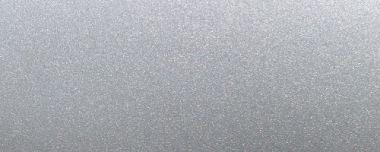Checklist for the use of water-based paints
Surface preparation
-
The surface must be clean and free of grease.
-
Iron and steel must be free of scale and rust.
-
Suitable preparations (depending on the surface) are: blasting, grinding and degreasing aqueous or alkaline degreasing chemical pretreatment (phosphating)
-
Blow dust off blasted surfaces using compressed air
Spraying room
-
Provide for sufficient aeration and ventilation to avoid a rise in humidity due to evaporating water
-
It is advisable to use an air humidifier to prevent a too low humidity
-
A slight air movement accelerates the drying process
-
Dry aspirators are suitable
-
For water-rinsed spray booths, please note: the coagulation agent must match the water-based paint; avoid any strong foam formation.
Application devices
- Coating components may not corrode. Designs that involve two different metals touching each other must be avoided as electrochemical processes may result in damage occurring. It is also possible that the water-based paint will coagulate. Before use, all parts of the system should be free of grease and other contaminations.
- When using electrostatic processing, ensure that the paint supply system is insulated.
- With electrostatic processing, the painting lines in the entire plant must be properly insulated.
- The spraying equipment should always be cleaned with water. It may occasionally be necessary to flush out supply lines using other cleaning agents.
Alternately processing water-thinnable and solvent-based coating materials
-
When alternately processing water-thinnable and solvent-based coating materials, it is necessary to avoid cross-contamination, as otherwise coating defects, such as loss of gloss, specks and craters, can occur. Changes in viscosity (thickening) are also possible. It is therefore necessary for the application systems to be carefully cleaned.
-
Hard water containing lime can result in visible defects in the water-based paint.
-
When changing from solvent-based to water-based paint, the lines should be flushed out in 3 stages in the following sequence:
1. with a recommended solvent
2. with an aqueous cleaning agent
3. with water (demineralised water is even better) -
When changing from water-based to solvent-based paint, proceed in the reverse order.
Temperature and humidity
-
The processing and drying temperature must be a minimum of +15 °C and a maximum of +30 °C; the drying process is significantly slower at temperatures below +15 °C; no film will form at temperatures less than +5 °C
-
During processing, the object temperature must be at least 3 °C above the dew point
-
During processing, the material temperature must be at least +15 °C
-
Relative humidity: a relative humidity below 30 % or above 70 % may necessitate special measures in processing
Flashing off/Drying
- Temperature: as far as possible 18 to a maximum of 30 °C
- Humidity 30 to 70 %
- Air exchange: minimum of a threefold room volume per hour
- For forced drying, comply with flash-off time
- An air-circulation control is necessary both with forced drying and burning-in
- For forced drying, comply with the temperatures specified by the recommendation in the Technical Data Sheet
- For burning-in, do not directly convey into the hot furnace, but comply with flash-off time; for possible temperatures, refer to the Technical Data Sheet
2K systems
-
Carefully mix base components and hardener using an automatic stirring system for a period of
3 minutes -
Processing using a 2K system is recommended for two component systems, because the end of the processing time is not detectable by a rise in viscosity.
-
Possible defects that can occur in association with 2K paints if the processing time is exceeded are the deterioration of the adhesion and corrosion protection with 2K EP primers as well as loss of gloss and blistering with PU-based 2K aqua top-coat paints
Disposal
- Paint residues as well as wastewater from cleaning the equipment must be disposed of as hazardous waste.
Application procedure/Processing viscosity
- For this information, refer to the manufacturer's Technical Data Sheets.
Occupational safety
- For this information, refer to the manufacturer's Safety Data Sheets.



